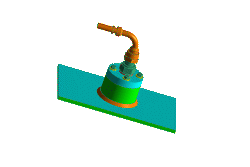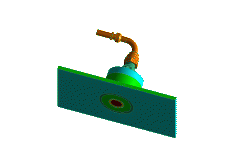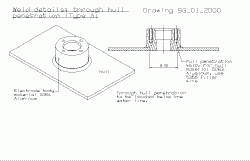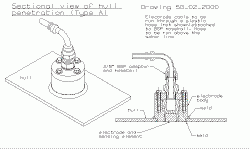|

For
installation guidelines and drawings not covered in this Section,
please contact Seaguard Ltd.
Three
types of reference electrode assemblies are available as standard:

|
|
|
Type
A reference electrode assembly. Steel or aluminum electrode
body (welded to hull).
|
Type
C reference electrode assembly. Through hull fitting.
|

|
|
Type
A reference electrode
The
Type A through hull penetration, illustrated in drawings SG_01_2000
and SG_02_2000 below, is designed as a welded fitting.

|
Drawing
SG_01_2000 |

|
Drawing
SG_02_2000 |
Referring
to drawing SG_01_2000, the electrode body will typically be of the
same material as the hull. A 50 mm hole is cut in the hull. Welding
techniques should followed approved practice with Drawing SG_01_2000
providing an example for hull and electrode body materials of 5083
and 6531 aluminum respectively.
Drawing
SG_02_2000 shows the complete fitting. A flexible tube (such as
a push lock hydraulic hose) should be attached to the hose tail
on the fitting with the end brought above the waterline. This arrangement
provides the secondary containment system (the cofferdam) required
by some classification societies whilst affording protection to
the electrode cable.
Type
C reference electrode
As
an alternative to the Type B electrode some users may prefer the
simplicity of a traditional GRP through hull fitting.This installation
involves drilling a single 42mm holein the hull. The fitting is
sealed to the hull using a butyl bead or a flexible polyurethane
sealant such as 'Bostik Seal N Flex' before the fitting is screwed
together.
General
With
any of the above electrodes they should be ideally located on the
hull bottom away from the presence of anodes. For a vessel length
L, the hull electrode should, ideally, be placed approximately L/3
from the transom.
Zinc
reference electrodes are robust, economical and highly resistant
to marine fouling.
All
Sentry
units support third party Silver-Silver Chloride electrodes.
For each Sentrylog
or Sentry
multizone fitted the same sensing element type must
be used in order to get correct indication.
|
